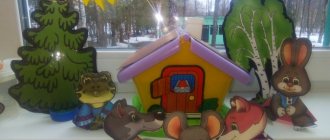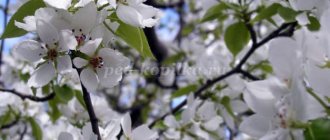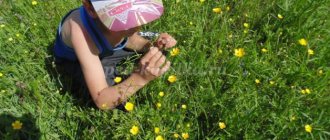Vegetable garden on the windowsill. Approximate list of plants for planting
Arefieva Ekaterina
Vegetable garden on the windowsill. Approximate list of plants for planting
"Vegetable garden on the windowsill»
A vegetable garden on the windowsill in a kindergarten promotes the development of curiosity and observation in children, this helps to better understand plant life . He is able to expand and develop an ethical sense, the ability to enjoy the beauty of grown plants and children’s ideas about plants as living organisms, about the conditions necessary for growth and development, the result of his work.
It is very important that children actively participate in planting and subsequent care of plants . Previously, programs gave precise recommendations on which plants should be planted in each age group , but now there are no such strict rules. A vegetable garden on a windowsill should, first of all, help in the development of children. Therefore, for pupils of the younger groups it is advisable to plant larger seeds than for pupils of the middle and senior groups. Also, in the younger groups, 1-2 types of plants are enough for planting , in the middle groups 2-3, in the older and preparatory groups - up to 5.
Approximate list of plants for planting
• you can grow 1-2 copies of indoor varieties of cucumber, tomato, and peas.
Plants regularly and the results recorded in a diary. In younger groups, the teacher sketches or photographs the changes. In the middle classes, children help ( for example , the teacher draws an onion, and the child draws green leaves). In senior and preparatory groups, the results of observations are sketched by children.
Work on organizing a vegetable garden on a window will be more successful if it is carried out in stages:
1. Planting plants , making index tables with names and planting . Introducing children to the algorithm for caring for plants . A selection of fiction about planted plants : sayings, poems, fairy tales, riddles.
2. Monitoring plant , conducting experiments. The results are recorded in a diary. Creation of a collection of vegetable seeds that are popular in our region. Getting acquainted with fiction, creating a card index of literary words, looking at illustrations, holding conversations and games.
3. Analysis and generalization of the results obtained in the process of children’s research activities. Design of the exhibition of drawings “From seed to sprout”
.
Writing stories about how to care for plants .
Very often competitions are held between groups whose garden turns out to be more beautiful. In competition mode, children develop their imagination even more.
Such work, carried out regularly starting from younger groups, has great educational opportunities.
Approximate list of play equipment in the first junior group Our first junior group of the kindergarten (nursery group) includes children from 2 to 3 years old. It is at this age that children develop. "Vegetable garden on the window." Growing plants in kindergarten Many parents who have their own gardens (dachas) do not suspect that the life of plants will begin to arouse the child’s great interest. Having learned to understand. Vegetable garden on the windowsill Growing mini-gardens on windowsills with kindergarten students helps easily, successfully and in an entertaining way model cognitive,.Vegetable garden on the windowsill A vegetable garden on the windowsill in kindergarten helps develop curiosity and observation in children.It expands children's ideas.
Lesson summary “Grandma’s garden. Vegetable garden on the windowsill" (senior group) Goal: • expand children's ideas about the garden and vegetable garden; • generalize and expand the knowledge of schoolchildren about how to care for indoor plants.
Vegetable garden on the windowsill Vegetable garden on the windowsill. One of the interesting ways that will help not only diversify the life of a child in kindergarten, but also educate.
An approximate list of didactic games for introducing preschoolers to plants Municipal budgetary preschool educational institution “Kindergarten No. 3 village. Nikolaevka" Compiled by: Kutyavina Olga Aleksandrovna.
Approximate list of musical works for preschoolers Approximate list of musical works for preschoolers. Music for children's free activities. Bach "Prelude" in C major, "Joke".
An approximate list of topics for discussion with parents of children in the middle group: Social and communicative development. 1. Collective games for middle school children 2. My family 3. How to behave in nature 4. How.
Project to generate interest in experimental research activities on growing plants “Vegetable garden on the windowsill” Preschool children do not have enough knowledge about plants and where they grow. On the necessary conditions for their growth.
Source
Observations within the framework of the project “Vegetable Garden on the Window”
Yulia Davydova
Observations within the framework of the project “Vegetable Garden on the Window”
1. “Growing onions”
observation No. 1
Goal: to arouse in children a cognitive interest in growing this garden crop , a desire to observe changes in the bulbs depending on conditions; learn to create an experimental situation, make sketches.
Having gathered the children around a large table, the teacher offers to look at the bulbs and compare them. He leads the children to the conclusion: the bulbs are the same in size and shape; both bulbs have brown dry scales, hard to the touch. Then he clarifies what conditions are needed for the bulbs to germinate and produce greenery. He suggests germinating them in different ways - one will have all three necessary conditions: light, water, heat; and the other will have water and warmth, but no light (the bulb must be tightly covered with a black cap)
.
“I wonder what will happen?”
- says the teacher and gives the children the opportunity to speak out and make assumptions.
“I don’t know, I don’t know what will happen,” he concludes, “let’s create different conditions for the bulbs and observe .
And to make it interesting for us to compare the bulbs, we will sketch them. Some children pour water into jars, others make sketches on the calendar page. In conclusion, the teacher says: “In a week, on the same day, we will look at the bulbs and draw them again.”
“Growing onions”
observation No. 2
Purpose: to teach children to notice the changes that occur in germinating bulbs, to associate these changes (beginning of germination)
with the presence of favorable conditions - water, light, heat; learn to connect cause and effect, make correct judgments and draw conclusions.
At the beginning of the conversation, the teacher clarifies how much time has passed since the day the bulbs were planted. First of all, they look at the bulb that was in favorable conditions (there is light, warmth, water, it has sprouted well, it has long roots and greenery. Then they open the black cap and look at the second bulb, the other has warmth and moisture, but no light. She also has long roots, but the feathers are much shorter, curved and yellow.
The teacher leads the children to the conclusion: For the full growth and development of a plant, several factors are necessary - light, heat, water. In the absence of at least one of them, the plant develops poorly.
2. Carrot observation.
Goal: developing the ability to establish cause-and-effect relationships, forming basic ecological ideas, fostering a love of nature. To deepen children's knowledge about the conditions necessary for the growth and development of plants, about the effect of soil on plants.
The teacher suggests looking at two carrots and comparing them. He leads the children to the conclusion: the carrots are the same in size and shape. Then he clarifies what conditions are needed for the carrots to germinate and produce greens. He suggests planting them in different ways - one with the root up, and the other with the root down. The teacher asks the children whether the carrots will sprout. Children help the teacher plant carrots and leave them in a warm, well-lit place. Duty workers are appointed to monitor the condition of the soil and water it if necessary.
The observation is repeated after 10 days. We see that the carrots, planted with the root down, have sprouted. But the carrots, planted with their roots up, did not sprout, shriveled, and became soft.
The teacher helps the children draw a conclusion: the root of the plant must be in the ground, otherwise growth is not possible.
3. Observation of birch branches
— Develop preschoolers’ interest in cognitive activity through experimentation. Give an idea that they can grow and develop if the necessary conditions are created for this (light, water, heat)
.
— Develop an aesthetic sense, a feeling of joy from the beauty of nature.
The teacher brings birch branches from the site and asks the children if there is any way to help them. Children, together with the teacher, put twigs in jars of water and make their first sketches on the calendar.
monitored for two weeks . They examine the kidneys, specify their shape and size.
Together with the teacher, children note changes in the condition of the branches after another week (opening buds, appearance of leaves)
. They make sketches.
Conclusion: You can extend the life of broken branches by providing them with the necessary conditions (light, heat, water)
Photo report “Vegetable garden on the window” Every year, in winter, my children and I in kindergarten traditionally organize a vegetable garden on the window. The goal of creating a window garden is to engage. Photo report as part of the environmental education project “Vegetable Garden on the Window” As part of the environmental education project “Vegetable Garden on the Window,” a number of events were organized and held. Why this project? Photo report “Vegetable Garden on the Window” Growing plants on the window, the so-called “Vegetable Garden.
Presentation “Vegetable garden on the window” Project idea: to create a vegetable garden on the window in a kindergarten group Goal: to develop children’s interest in experimental and research activities.
Project “Vegetable Garden on the Window” “Vegetable Garden on the Window”
Program objectives: 1. Cognition: create conditions for the development of children’s cognitive and creative abilities.
Experimental activities in the middle group within the framework of the project “Vegetable Garden on the Window” Experimental activities within the framework of the project “Vegetable Garden on the Window” We began our experiment by examining different seeds from. Presentation “Vegetable garden on the window” Presentation “Our cheerful vegetable garden”. Goal: creating conditions for generalizing and expanding children’s knowledge about the growth of cultivated plants through creation.
Project “Vegetable Garden on the Window” Project “Vegetable Garden on the Window” The “Concept of Preschool Education” states that a positive attitude is established in preschool age. Project “Garden on the Window” Project: short-term Type of project: educational, research, creative Participants in this project: children, their parents and teacher. Project “Vegetable Garden on the Window” Long-term work plan for the project “Vegetable Garden on the Window” Kazip Aliya Paktzhanovna Long-term work plan for the project “Vegetable Garden on the Window” Project.
Source
Calendars for observing the growth and development of living beings
The second type of graphic modeling is the creation of a calendar of observations of the growth and development of a plant or animal. It is much easier to record changes in growing plants than changes in young animals. This is explained by the fact that the latter have behavior and therefore, during growth and development, acquire not only new external features, but also new aspects of behavior.
Creating a model of mammal development using hamsters as an example is an interesting process for children, which is best done with the help of ready-made pictures. This is especially important in the first ten days after the birth of small hamsters due to their hidden lifestyle and the impossibility of monitoring the nest. In this case, the pictures complement and illustrate the teacher’s story about what is happening in the house, what the hamsters look and grow, and how the mother takes care of them.
The set of pictures includes the following points:
1) 2-3 newborn cubs lie in the nest;
2) the mother lies in the nest, the cubs suckle her;
3) hamsters of a week old (have begun to cover themselves with hair, open their eyes, stand on their legs) are in the nest;
4) two-week-old babies began to leave the house, but the mother drags them into the nest, worries, and protects them;
5) three-week-old hamsters try to eat food themselves and explore the nearest space;
6) four-week-old hamsters run after each other, climb onto a house, into a wheel, fight, and play.
Modeling the growth and development of hamsters can be done on 4 pages of landscape-sized white construction paper, each of which corresponds to one week of animal development. At the bottom of the 2-4th pages is a “week” strip, which children paint in the appropriate colors or make an appliqué of colored squares. The rest of the page is filled with ready-made pictures depicting small animals (their condition and behavior are age appropriate). Pictures can be inserted into the slots or temporarily attached in some other way. The result is a calendar of growth and development of cubs, which is essentially a model that reflects, with the help of pictures, the morphofunctional changes of the animal organism during the process of ontogenesis.
Modeling of plant growth and development is also carried out using drawings. This could be a calendar for observing the growth of radishes or cucumbers. In all age groups, once a week you can record (draw on separate pages) onions sprouting in jars. The graphic model will be especially interesting if several bulbs germinate under different conditions of a specially created experimental situation and a multi-colored time strip is depicted on each page - “week”. All drawings are made using two cardboard stencils - a jar and an onion. Children are happy to trace them, draw roots and greenery, i.e. easily reproduce nature. Such a model in the form of a calendar of observations of growing onions can be created with both younger and older preschool children. Over time, the onion is eaten, the jar with the onion is disposed of, but the model remains - it can be examined many times both in free time and in special classes.
A calendar that records the growth of a vegetable crop (for example, a rapidly growing radish) in open ground looks somewhat different. On each page of such a calendar, in addition to the image of the plant itself, there are parameters: the time (“week”) during which the plant changes; conditions under which crop growth occurs (weather combined with care work). Thus, modeling the growth and development of radishes means daily coloring the day of the week and recording the weather, marking labor operations with icons on the days they were performed, weekly inspection and drawing of the plant with all its new features. Such a calendar is a full-fledged graphic model of ecological content: it clearly presents the morphofunctional changes of a plant in relation to its habitat. A neatly and correctly filled out, brightly colored calendar becomes a good demonstration tool used in a wide variety of educational options and work with children. The calendar can be viewed in autumn and winter, when radishes are not growing, in spring - when they are just preparing to sow them. In general, the calendar is interesting for children to look at, because they themselves drew, worked and harvested, and then ate radish salad.
Organization of winter feeding. Bird watching calendar
Winter feeding of birds is one of the important conservation and environmentally significant activities, the correct organization of which a kindergarten can provide real assistance in preserving their species diversity. Feeding birds is a simple, but pedagogically appropriate and educationally highly effective activity in which children of all age groups can participate. Birds go hungry in winter: daylight hours are short, food is scarce, and energy costs are difficult to replenish. It is especially difficult for them in severe frosts: from the cold, but mainly from hunger.
When organizing winter feeding of birds, the teacher does the following:
— Starts feeding (in central Russia) at the end of October - beginning of November (at this time, wintering birds approach human dwellings in search of food).
— On the territory of the kindergarten, several stationary wooden feeders are hung at a considerable distance from each other (not near the playgrounds) - at the rate of one for 2-3 groups. They can be hung on second floor windows or in places where they will be clearly visible from the windows.
— Teachers teach children to collect bread crumbs and leftover dry cereals in a special jar with a lid, regularly place food, and seeds of wild herbs collected in the warm season on feeders. Groups attached to one feeder, after feeding the birds for a week, replace each other and monitor it so that there are no breaks.
A clear organization of feeding birds at the beginning of winter is of great importance: the birds get used to the feeding place - tits, pigeons, flocks of sparrows stay close to the site, regularly appear near the feeders, and wait for people on the branches of nearby trees and bushes. After the New Year, the cycle of observations of wintering birds begins. At the same time, observations are recorded in a special calendar for one to two weeks. This calendar, like others, is a model. It has three gradually increasing complexity modifications: for younger and middle age, for senior and preparatory school groups.
The calendar for younger preschoolers, as well as the upper part of the calendar for the older group, are filled with cards with drawings of wintering birds. Observations are recorded in this way every day anew and do not leave graphic “traces”. The lower part of the calendar of the senior group and the entire calendar of the preparatory group for school are filled out differently: every day, colored “checkmarks” (symbolic designation of birds) are placed in the stripes of the corresponding day.
Calendars differ not only in the way they record observations, but also in their content. The volume of simulated content for older preschoolers is much larger: a time parameter is introduced (days of the week), various features of bird behavior are recorded (who is waiting for food, who eats on the feeder and who is under it, who flies over the site and watches the birds' dinner). In the calendar of the preparatory school group, you can record the weather and composition of food (external conditions), against which the birds visit the feeding site.
The main content of the calendars of all age groups (and the only one for the younger ones) is the composition of the birds. Filling out the calendar once every two weeks at the height of winter feeding allows children to get acquainted with the diversity of wintering birds, the characteristics of their appearance and behavior.
Entering the calendar three times in the school preparatory group - at the very beginning of feeding (end of October), at its height (January) and at the end of March - makes it possible to trace the dynamics of changes in the composition of birds associated with their autumn-spring migrations: in the fall you can still see wild ducks, see the flight of cranes, in March - record the arrival of rooks and ducks in the calendar. Thus, the oldest preschoolers will create a more detailed graphic model of the life of birds in the cold season than in the previous group.






